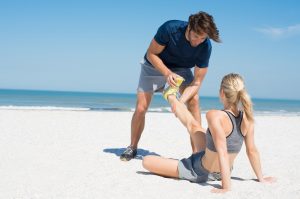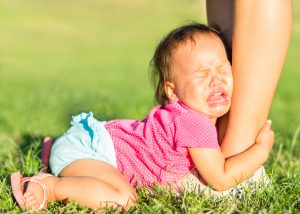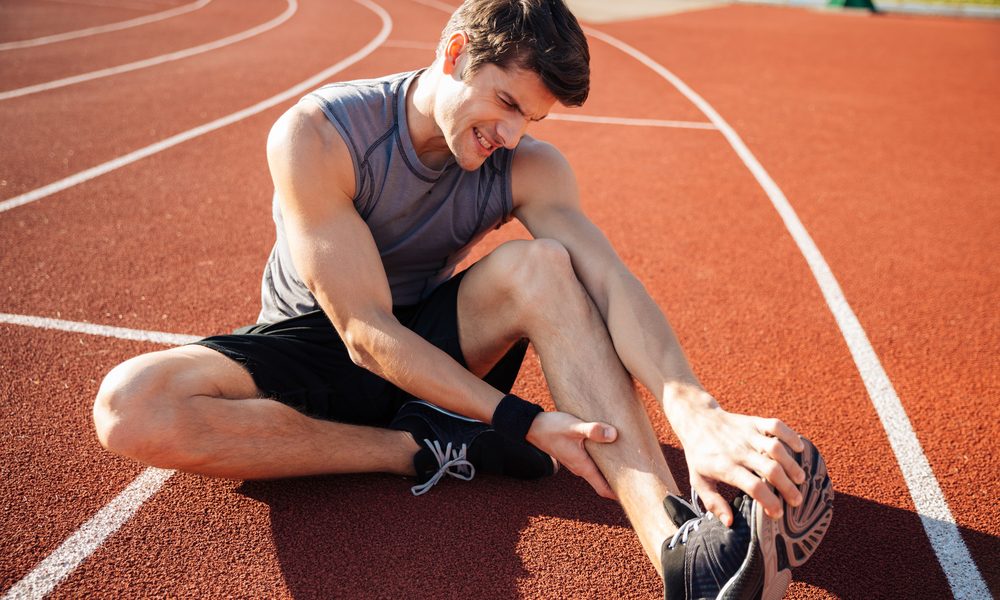What is The Real Cause of Muscle Cramps?
Muscle cramps sideline many athletes. It’s common to see even professional athletes carried off the field because of cramps. Of course, all of us “regular” fitness folks get the joy of experiencing them as well. Everybody hates cramps and most people have some home remedy to prevent or treat them. From eating bananas all day to drinking pickle juice before bed, everyone has a trick they swear by! Just as there are many remedies, there are many theories about why we get cramps in the first place. These mostly involve heat exhaustion, dehydration, and electrolyte deficits. Electrolytes are things like sodium, potassium, and magnesium.
But the truth goes deeper than that. First, let’s explore some of the common myths about muscle cramps and why they don’t hold up to scrutiny. The theories of electrolyte deficits and dehydration go back decades. Unfortunately, these ideas are based on imperfect science. Early studies about exercise-induced cramps found simple associations between cramps and exercising in hot conditions. Increased frequency of cramping was noted after football practices during the summer or working in sweltering mine shafts. But then again, cramping is still a problem for marathoners during very cold weather. So it can’t be the heat itself that causes the problem. But what about sweating?
Dehydration and Muscle Cramps
When you consider the theory of dehydration from sweat, the data just doesn’t provide the support we need either. It turns out there is no difference in total fluid loss between people who cramp up and the rest of the people doing the same workout. Rates of sweating aren’t different either. And studies with careful replacement of lost fluids don’t prevent cramping. So yet again, the results don’t support the dehydration theory.

Magnesium and Muscle Cramps
Electrolyte imbalances have failed the same scientific tests as dehydration theory. Low sodium can cause cramping. But studies have never shown cramping athletes to have notable sodium defecits. And while magnesium may be pushed by people trying to sell you supplements, taking extra magnesium has not been effective when studied for idiopathic cramping. (PS- idiopathic means that we have not identified the cause). And I could not identify any scientific studies linking magnesium and exercise-associated cramping. The moral of the story is “save your money.”
Lactic Acid and Muscle Cramps
Another common scapegoat for any problem after exercise is lactic acid. But if you recall our post last week, lactic acid is cleared rapidly after a workout. But cramping can occur hours later. So yet again, the basic science doesn’t support the theory. You should also look at the real world and see if your theories fit with what is readily observable. What is the best way to immediately stop a cramp? What does every single person with a cramp do? They stretch it out! Watching someone react to a cramp is almost as universally identifiable as seeing someone choking. They grab the affected muscle, they pull on the other side of the joint, and they try to stretch that mother out! And you know what? That works! But… stretching doesn’t do anything to change their hydration or salt balance. So how can they be the cause?
So if I’m just gonna sit here dumping all over your long-held notions I should probably have an alternative explanation, right? Well, it turns out that there is a better theory. This one was put forth in 1997 and involves the motor reflexes that help to control all the muscles in your body. It isn’t as easy to understand as dehydration but when is science ever easy? Congratulations though, you are about to become the smartest person you know when it comes to cramps. (Add that to your good looks, and you’re going places!)
The Real Cause of Muscle Cramps
It turns out that the best explanation we have for exercise-associated muscle cramps is a communication problem between the two major reflexes that help your body move without thinking. As you become fatigued, these systems lose their ability to effectively coordinate with each other resulting in a spastic tug-of-war. That causes the uncontrolled spasm we call a cramp.
NERD ALERT! SCIENCE INCOMING! The first reflex system involves the Muscle Spindle fibers. These are specialized nerve endings that cause the stretch reflex – muscle contraction in response to sudden stretching. This is the reflex we all know, the one that makes you kick your knee when tapped at the doctor’s office. Its actual function is to help your body catch you when you shift your weight while walking. It makes your quads contract when your feet contact the floor. As a side note, it also helps you set the hook when you feel a fish grab your line!
On the other side of the equation is the Golgi Tendon Organ (GTO). These special nerve endings sense the intensity of muscle contractions. They live in the junction between a muscle and its and tendon. If the contraction is too strong, the GTO reflex tells your muscles to settle down. They essentially stop your muscles from tearing your tendons clean off while contracting. The Spindle fibers and the GTO systems usually work in tandem to automate simple actions like walking. They also help make the rapid corrections required to keep you stable on uneven surfaces.
Fatigue and Muscle Cramps
But when neuromuscular fatigue sets in, these systems stop communicating with each other. Instead, they begin to melt down like a toddler so exhausted that they can’t stop crying long enough to fall asleep. Fatigue in this sense means that you have essentially depleted the signaling molecules from your nerve endings and from within the muscle cells. So they can’t respond as well or as quickly as they normally would. Ultimately this results in a muscle that can’t regulate its own contraction, and then its “Cramp Town, Population: You.”
The way to stop a cramp once it has started is by stretching it. In the laboratory, a calf cramp can be stopped by electrically stimulating the Achilles tendon below it. The sensory nerves in the tendon can seemingly also be stimulated by manual stretching. And once they are stretched, they produce an inhibition of the calf contraction and a relaxation of the cramp.
So when it’s all said and done, the reason football players probably get cramps in the summer is that they’re starting a new season, unaccustomed to exercise, and possibly doing two practices a day. That’s going to produce a lot of fatigue, and a lot of cramps. Unfortunately, all this doesn’t give us a simple way to prevent cramps. In fact, the best way to prevent cramps is probably to be well accustomed to regular exercise. Turns out one of the best preventative measures we have is regular exercise. I think our regular readers are starting to notice a theme here!

Prevention of Muscle Cramps
There are many reasons why you should focus on staying hydrated and replacing lost electrolytes during exercise. Unfortunately preventing cramps is not one of them. But don’t let me stop you from drinking pickle juice to prevent cramps. That stuff is delicious! But I digress. My own pet theory on preventing cramps after exercise is that massage and foam rolling may help to activate the relaxation pathways as well. This theory is based on the limited information we have about how massage therapy helps decrease muscle tone in general. In one of our upcoming posts, we are going more in-depth on foam rolling as a recovery method, so keep your eyes open for that post soon!
Disclaimer
This post is all about exercise-associated muscle cramps, known as EAMC in the scientific literature. That warning is just to prevent people from taking this information and applying it to problems like unexplained night cramps, menstrual cramps, or cramps that come with spinal stenosis and nerve impingement. Those have different causes and treatments. The above information does not apply to them.
Works Cited
1. Dalbo, V J, et al. “Putting to Rest the Myth of Creatine Supplementation Leading to Muscle Cramps and Dehydration.” British Journal of Sports Medicine., U.S. National Library of Medicine, July 2008, www.ncbi.nlm.nih.gov/pubmed/18184753.
2. Jung, A P, et al. “Influence of Hydration and Electrolyte Supplementation on Incidence and Time to Onset of Exercise-Associated Muscle Cramps.” Journal of Athletic Training., U.S. National Library of Medicine, June 2005, www.ncbi.nlm.nih.gov/pubmed/15970952/.
3. Khan, S I, and J A Burne. “Reflex Inhibition of Normal Cramp Following Electrical Stimulation of the Muscle Tendon.” Journal of Neurophysiology., U.S. National Library of Medicine, Sept. 2007, www.ncbi.nlm.nih.gov/pubmed/17634341/.
4. Miller, Kevin C., et al. “Exercise-Associated Muscle Cramps: Causes, Treatment, and Prevention.” Sports Health, SAGE Publications, July 2010, www.ncbi.nlm.nih.gov/pmc/articles/PMC3445088/.
5. Nelson, N L, and J R Churilla. “A Narrative Review of Exercise-Associated Muscle Cramps: Factors That Contribute to Neuromuscular Fatigue and Management Implications.” Muscle & Nerve., U.S. National Library of Medicine, Aug. 2016, www.ncbi.nlm.nih.gov/pubmed/27159592.
6. Schwellnus, M P, et al. “Aetiology of Skeletal Muscle ‘Cramps’ during Exercise: a Novel Hypothesis.” Journal of Sports Sciences., U.S. National Library of Medicine, June 1997, www.ncbi.nlm.nih.gov/pubmed/9232553.
7. Schwellnus, M P. “Cause of Exercise Associated Muscle Cramps (EAMC) – Altered Neuromuscular Control, Dehydration or Electrolyte Depletion?” British Journal of Sports Medicine, British Association of Sport and Excercise Medicine, 1 June 2009, bjsm.bmj.com/content/43/6/401.long.

